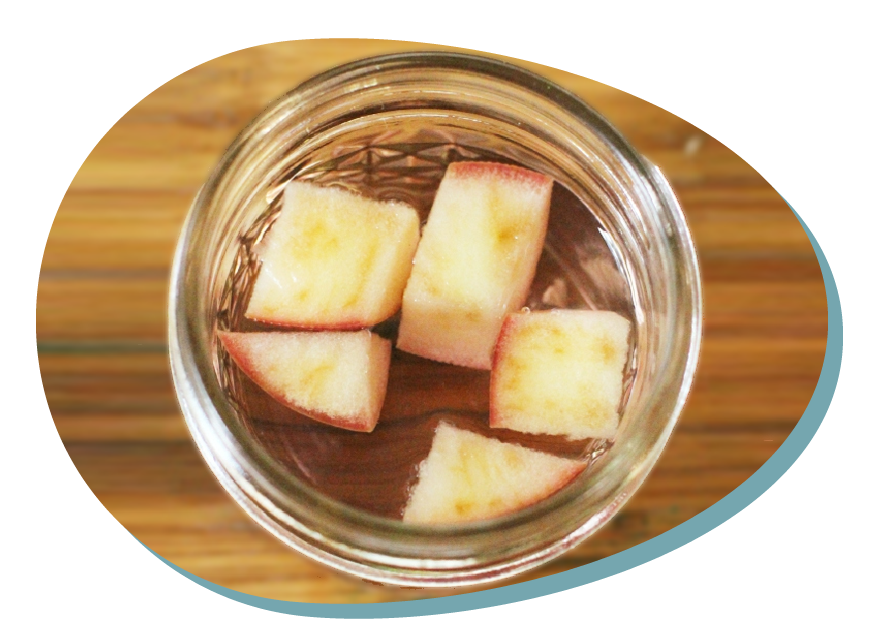Apple Oxidization Experiment
Type of resource: Weblink / Youtube video
Web address https://www.pre-kpages.com/apple-science-experiment/
Youtube:
https://www.youtube.com/watch?v=uIOPC_FWmQM
https://www.youtube.com/watch?v=BacUEOL8Wco
Language: English
Description
Observing how different liquids affect apples.
Scientific concept introduced
Oxidation: using evidence and existing science to support predictions and make conclusions about the results.
Creative and critical thinking
Critical Thinking:
– Analysis
– Inference
Creative Thinking:
– Imagining
Mathematical reasoning
Measuring
Scientific thinking
Questioning
Observation
Designing experiments
Conducting research – predicting, testing hypothesis, observing, experimenting
Drawing conclusions based on evidence, reasoning
Learning how to learn
Self-efficacy in learning
Fun in learning
Learning collaboratively
Problem solving
Additional
Following instructions
Sharing responsibility for a task
Fine motor skills
Taking common decisions
Sharing ideas – negotiating meanings
Following safety rules
Apple Oxidization Experiment
Overall aims
- Observing how different liquids affect apples.
- Using evidence and existing science to support predictions and make
conclusions about the results.
Vocabulary – keywords should be understood
Apple, Oxidization (Oxidation), “Control”, Sample.
Expected learning outcomes (operational aims)
The children will be able to:
Count – counting the apple pieces that go into each bowl
Write – children can help label each container
Scientific process – ask a question, experiment, observe, and record
Vocabulary – use different words to describe observations
STEM skills – to which the learning unit is related to
CORE STEM SKILLS
Asking questions
Observing and making predictions
Testing
Analyzing the results
Drawing conclusions
ADDITIONAL SKILLS
Hand-eye coordination
Fine-motor skills
Writing
Reading
Oral Language
Group work
Drawing
Teaching methodologies/activity outline
Introduction
This science experiment focused on how different liquids affect apples.
1. To set up the experiment, set out five containers with a few apple pieces in each one.
2. Label the five containers with the name of the liquids you are going to use: Lemon, Winegar, Water, Tonic Water, Soda
3. Once everything is set up, pour the appropriate liquids into each cup.
4. If you want, you can also set up a “control” cup of apple pieces without any liquid.
5. Then wait and see the chemical reaction.
6. After a few hours, check on the apples and talk about your observations. Record observations on the Recording Sheet if you choose.
Conclusion:
Oxidizing happens when the apples come in contact with the oxygen in the air and begin to react, turning brown. There is an enzyme in the apples, that when exposed to oxygen, turns the apple brown. Lemon juice, for example, keeps the apples from browning, because it slows down this enzyme. Keeping the apples submerged regardless, will help to cut off the oxygen supply to the apples.
Assessment of learning
Apple Science Experiment Recording Sheet (optional)
Equipment and materials to be used in learning unit (tools, ingredients etc)
Small containers
Apples
Lemon juice
Vinegar
Water
Tonic water
Soda
Kind of setting
Kitchen or classroom (no cooking facilities are needed)
References – source
Website: https://www.pre-kpages.com/apple-science-experiment/
Youtube
https://www.youtube.com/watch?v=uIOPC_FWmQM
https://www.youtube.com/watch?v=BacUEOL8Wco
Apple Oxidization Experiment
1. Usefulness for STEM education – integrating content of different disciplines
Cross-curricular character of the resource

The range of S-T-E-M subjects included

The presentation of possibilities of including artistic activities (STEAM approach)

2. Expected learning outcomes
Consistency (links) with preschool core curriculum

Communicativeness of description

3. Methodology of teaching
Clarity, communicativeness of instructions for teachers

Meaningful learning – using practical life problems

Original idea

The level of ease in implementing the methodology to preschool age children

The level of ease in preparing necessary ingredients, materials and equipment needed

4. Sustainability
Ecological characteristics of materials/ results

Supporting healthy eating habits

Low ecological footprint

Possibilities of inclusion (respecting cultural diversity and food intolerances)

5. Class management
Using differentiated forms of work – individual, team work etc.

Individual work

Team work

Whole group
6. Time management

Short activity (10-15 minutes)

Medium activity (20-30 minutes)

Long activity (1 hour or more)

Very long activity (1 day or more)
PDF: https://www.printfriendly.com/p/g/P4x7eE

